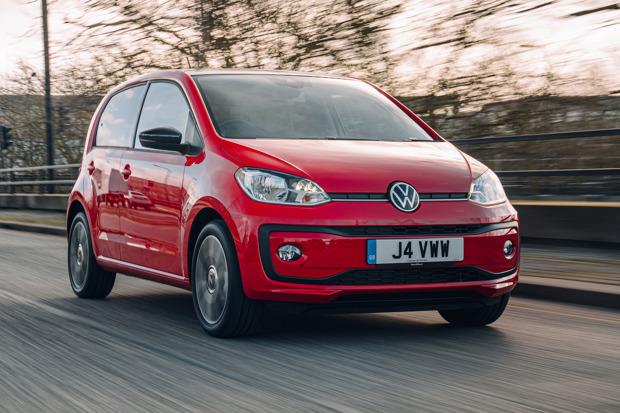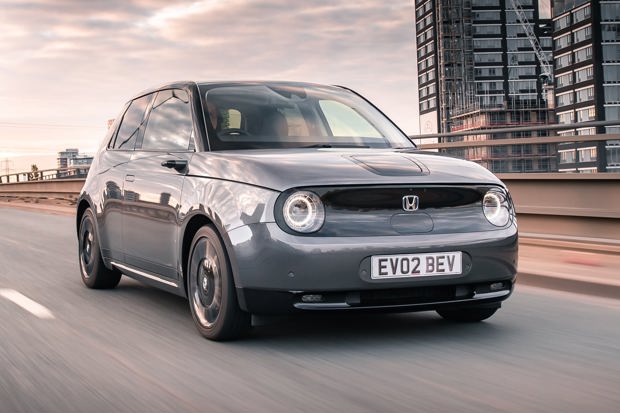Best city cars 2025
.jpg?width=620)
City cars are the unsung heroes of the motoring world. We expect them to be as safe as larger cars, offer the latest technology, be cheap to run and affordable to buy. Oh, and they need to be stylish, because nobody wants to look unsexy in the city...
The fact that many achieve all of the above and be great to drive is remarkable. For less than £20,000, you can buy a small car with more tech than you could ever wish for, space for you and a few mates, solid safety credentials and running costs that'll make you think twice about catching the bus.
Today's batch of city cars have been joined by some electric upstarts, several of which have made our shortlist of the best urban runabouts. If you rarely venture out of the city and have access to a charging point, an electric car could be just the ticket.
Here are our favourite city cars you can buy right now.
Best city cars
|

Kia Picanto
The Picanto is one of Kia’s best-selling cars, and has won legions of fans over the years. Prices start from less than £14,000, yet all models come with five doors, electric windows and airbags all-round (although we’d go for the £14,500 ‘2’ spec, which adds air conditioning and alloy wheels). The Picanto comes with a 1.0-litre engine in either standard or turbocharged guise – we prefer the latter – and you can get an automated manual gearbox if you prefer. The boot is a passable 255 litres, swelling to more than 1000 litres with the rear seats folded, and the Picanto is a stable, solid-feeling and straightforward car to drive. A seven-year warranty is an added bonus.

Volkswagen Up
The VW Up is an ingenious machine designed from the ground up to be a city car. Small-capacity engines are carefully packaged beneath a short bonnet, leaving plenty of space left over for front and rear passengers, plus a 251-litre boot. It’s not the cheapest city car to buy, but it feels solid and robust enough to justify the premium prices. Some interesting trim lines come with a selection of snazzy styling features, too. Be quick, because Up production has ended, so once current stocks have run dry, the little VW will be no more.

Hyundai i10
Hyundai’s smallest car, the i10 is consistently responsible for some of its biggest sales figures. These days, Hyundai focuses on delivering value for money, rather than bargain-basement prices. The i10 thus isn’t the cheapest of city cars, but all models get air conditioning, alloy wheels, rear-view camera and an 8-inch touchscreen with Apple CarPlay and Android Auto connectivity as standard. The 1.0-litre engine is willing enough in the city, with an optional automatic gearbox for ultimate ease of use, while a larger 1.2 offers more power. Even more fun is the 100PS 1.0-litre turbo, which comes in sporty N Line grade. It turns the i10 into a micro-sized hot hatch, with the styling to match – both outside and in.

Citroen Ami
Okay, the Ami is not technically a car – it’s a quadricycle – but for a city car that works to its advantage. For a start, it can be driven by drivers aged 16 and up, and without a full licence. It’s also really affordable to buy new, and with its pure-electric power should cost relative peanuts to run compared to petrol or diesel cars. Sure, it’s not great out of town, with a top speed of just 28mph. But with quirky looks, a really tight turning circle and dinky dimensions, it’s a cracking choice for a city car if it fits your particular set of requirements.
.jpg?width=620)
Fiat 500 Electric
The latest model of the Fiat 500 is electric only, and a completely different car to the older, mild-hybrid powered 500 that’s also still sold. The chic looks are all present and correct though, harking back to the iconic city car of the 1950s, and with up to 199 miles of electric-only running (depending on the model you go for) it’ll nip you around the city multiple times before you need to plug in to recharge its battery. That’s a good chunk more than rivals like the Honda e or MINI Electric.

Toyota Aygo X
The striking Toyota Aygo X is a novel compact crossover-style machine, with SUV looks (complete with two-tone paint) clothing a contemporary interior. There are several different grades of infotainment and you can choose a premium audio system, too. Toyota even offers a huge fold-back canvas roof, for open-top thrills in the summer. To drive, it’s likely to prove light and fuss-free, with a single 1.0-litre engine promising thrifty fuel economy. Not the cheapest city car, certainly, but one of the most interesting. It's also likely to be one of the most reliable.

Suzuki Ignis
The Suzuki Ignis is another city car with a side order of SUV attitude. Its angular lines and upright nature are very appealing, not least because clever Japanese engineers have preserved an impressive amount of interior space. Those in the front sit high and will be very comfortable, but there’s also enough room for adults in the rear, plus a 267-litre boot. Suzuki calls all versions of the Ignis ‘hybrids’, as a mild-hybrid stop-start system is standard. Almost uniquely in this sector, you can get the range-topping Ignis SZ5 with all-wheel-drive, creating an unlikely but very capable small city car 4x4.

Honda e
We’ve included the Honda e here not because it’s a bargain – it’s certainly not that – but because it’s such a brilliantly crafted car, perfected for city-centre use. The all-electric and zero-emissions drivetrain is responsive and has a range of 137 miles, which is likely to be enough if you spend most of your time in the city and you have access to a charger. It has an incredibly tight turning circle, a fantastic tech-packed dashboard with five full-length screens, and premium-level interior quality. Best of all, it looks like a concept car that has escaped from a motor show stand. No city car is more futuristic or more lovable than a Honda e.
.jpg?width=620)
Fiat Panda
The Fiat Panda isn’t the force it once was, but it still has a loyal following in the UK. Impressive space efficiency is one big reason why. The five-door body offers decent room both front and rear, while the ample boot is well-shaped. Inside the cabin, there are stowage spaces everywhere, and the raised seating position gives a good view out. It’s a pity, then, that Euro NCAP awarded the Panda a zero-star safety score in 2018, due to its lack of advanced safety tech. If you're after a Panda with a bit of attitude, check out the Cross, which features a rugged makeover, 15-inch alloy wheels and a 7-inch touchscreen infotainment system.

Abarth 500e
If you fancy a Fiat 500 Electric with a sting in its tail, look no further than the Abarth 500e. It shares a lot in common with the Fiat, and although the 164 miles of range is less than the Fiat's official 199 miles (in the 42kWh version), it's much more fun to drive. It'll sprint to 62mph in seven seconds, but that's only half the story, because it also features a sound generator to give it the soundtrack of an old Abarth exhaust system. It also has three driving modes, including one that makes it feel like a little terrier. If that's not enough, check out some of the paint options, including the lurid Acid Green (pictured).
How big are the best city cars?
With city cars, every millimetre counts. No car here stretches beyond four metres long, and although width is less of an issue, manufacturers still try to keep them narrow for squeezing past parked cars. Some are particularly compact: the Citroen Ami measures just 2.8 metres long, so you can almost park it nose-in to the kerb.
Are city cars safe?
Euro NCAP is as strict with city cars as it is with all other types of vehicle. This is why the Fiat Panda was castigated a few years ago, and awarded a zero-star crash-test score: if motors don’t measure up, they get called out. Luckily, other models are much safer, with the Honda e scoring four stars in 2020 and the Volkswagen Up earning three stars in 2019. Most city cars are now available with similar active safety technology to larger cars, which will prove particularly useful in busy cities.
Are city cars cheap to run?
City cars don’t generally have complex hybrid or plug-in hybrid systems, and although growing numbers are offering pure electric options, their high list prices can be prohibitive. Arguably, though, they don’t need exotic tech: city cars are small, light and cleverly-designed. It means their efficient engines generally sip fuel rather than guzzle it. You should have no trouble seeing 50mpg or more with a bit of forward-planning. And as such tiny motors also come with low insurance groups and competitive servicing costs, it all adds up to a car that should be very cheap to run.
What city cars with auto gearboxes do you recommend?

